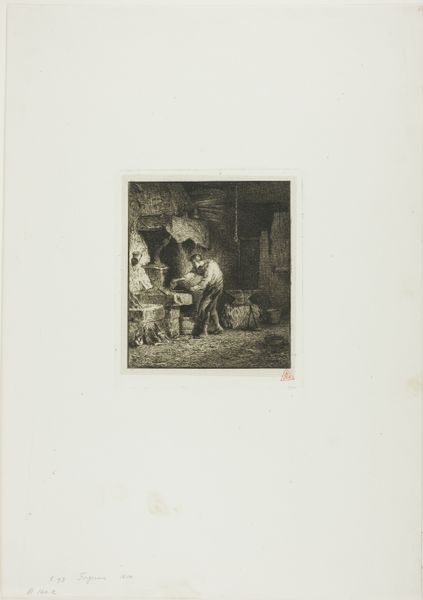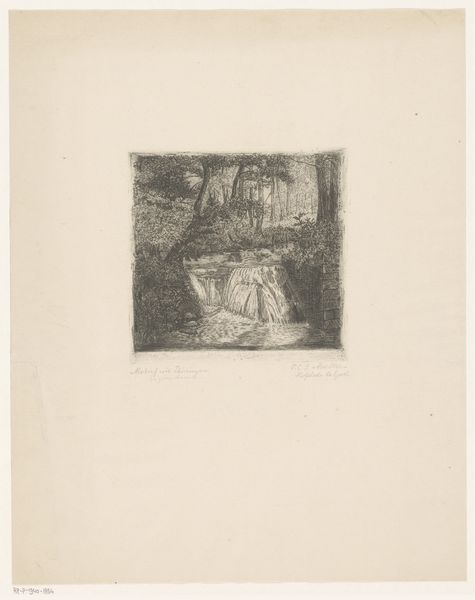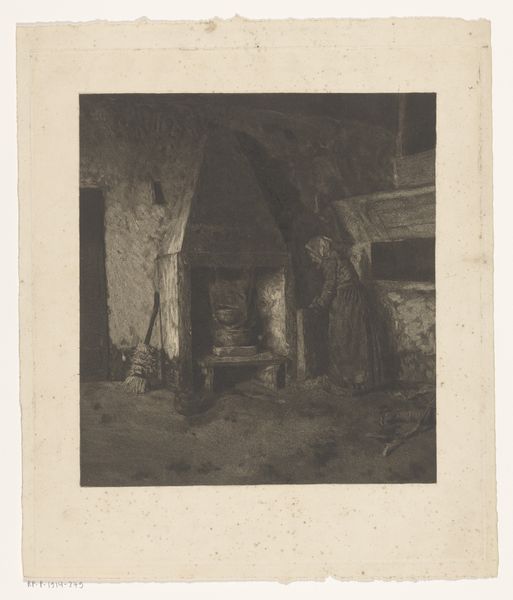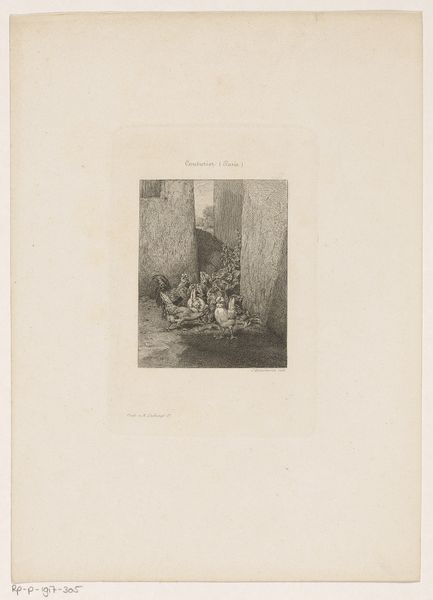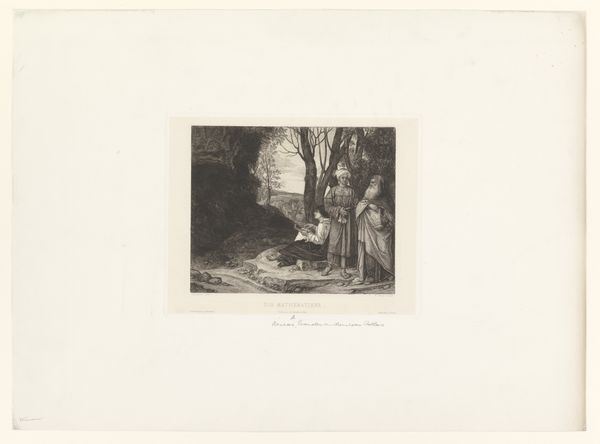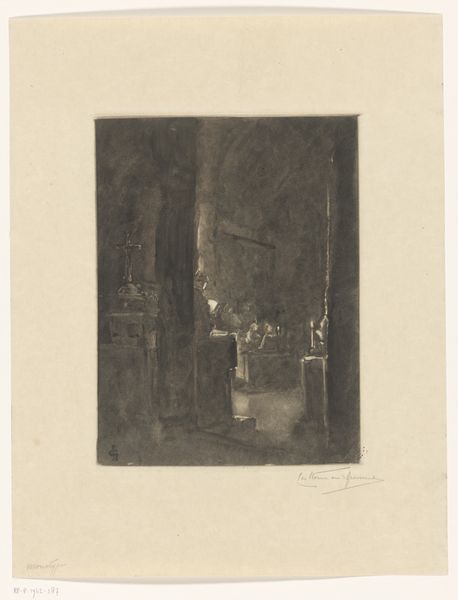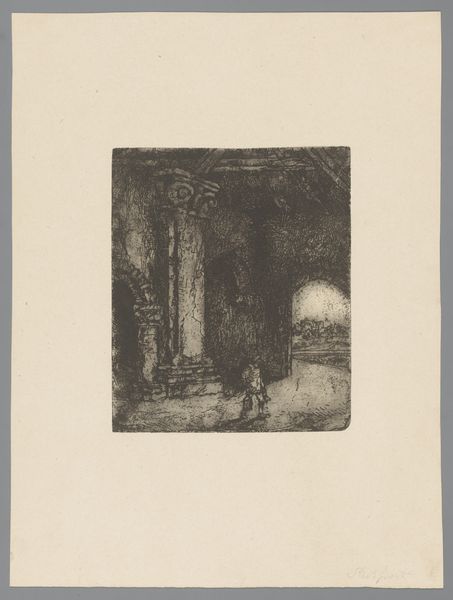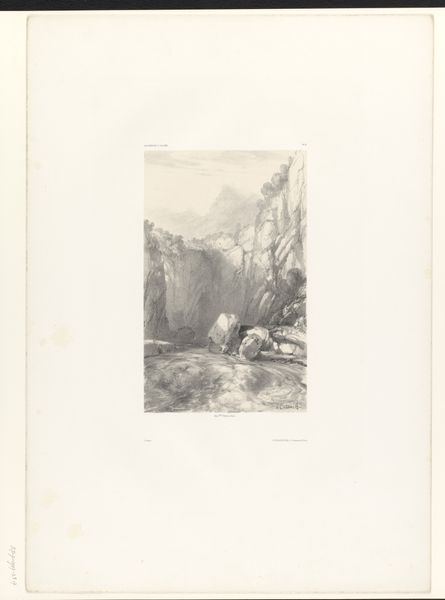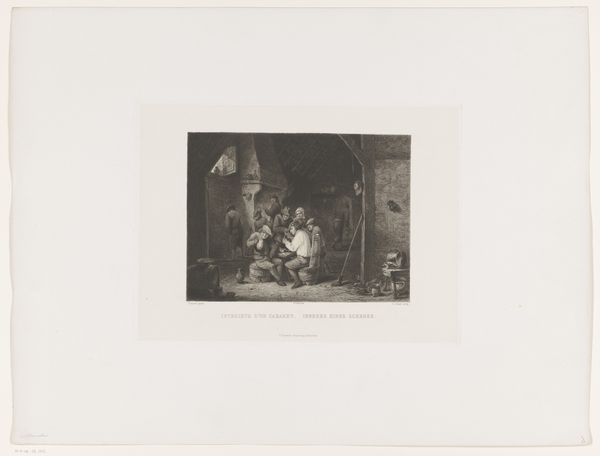
drawing, print, etching, intaglio, paper
#
drawing
#
ink paper printed
# print
#
etching
#
intaglio
#
landscape
#
paper
#
genre-painting
#
realism
Dimensions: 133 × 113 mm (image/plate/chine); 319 × 243 mm (sheet)
Copyright: Public Domain
Editor: This is Charles Jacque's "The Forge," an etching done in 1848. The first thing I notice is the light—it's dramatic, almost theatrical. What jumps out at you? Curator: The image is like a visual echo of societal shifts during the mid-19th century, with romanticism giving way to realism. How do you see the symbolic role of the blacksmith in that transition? Is it just a trade, or is it something more? Editor: Hmm, I guess I hadn't considered that. I was too focused on the technique. To me, it looked like Jacque was really interested in portraying labor, everyday life. Curator: Precisely. Notice the composition – the blacksmith, illuminated, almost as a saint in a medieval altarpiece, amidst the dark, cavernous forge. Is this a romanticized vision or a gritty portrayal of work? And what does that ambiguity say about how society viewed labor? Editor: I see what you mean! It's like the image itself is caught between glorifying labor and showing its harshness. Does the forge itself hold any significance as a symbol? Curator: Absolutely. The forge represents transformation, a place where raw materials are molded into something new, which historically often represents social transformation. In an era of burgeoning industrialization, do you see the blacksmith as a figure of progress or a relic of the past? How might viewers in 1848 have interpreted this imagery? Editor: I never thought about all the different layers of meaning behind something that seemed so straightforward. It really changes my understanding of it! Curator: And that’s the beauty of art, isn’t it? It holds a mirror to society, reflecting our hopes, fears, and changing values through powerful, enduring symbols.
Comments
No comments
Be the first to comment and join the conversation on the ultimate creative platform.
